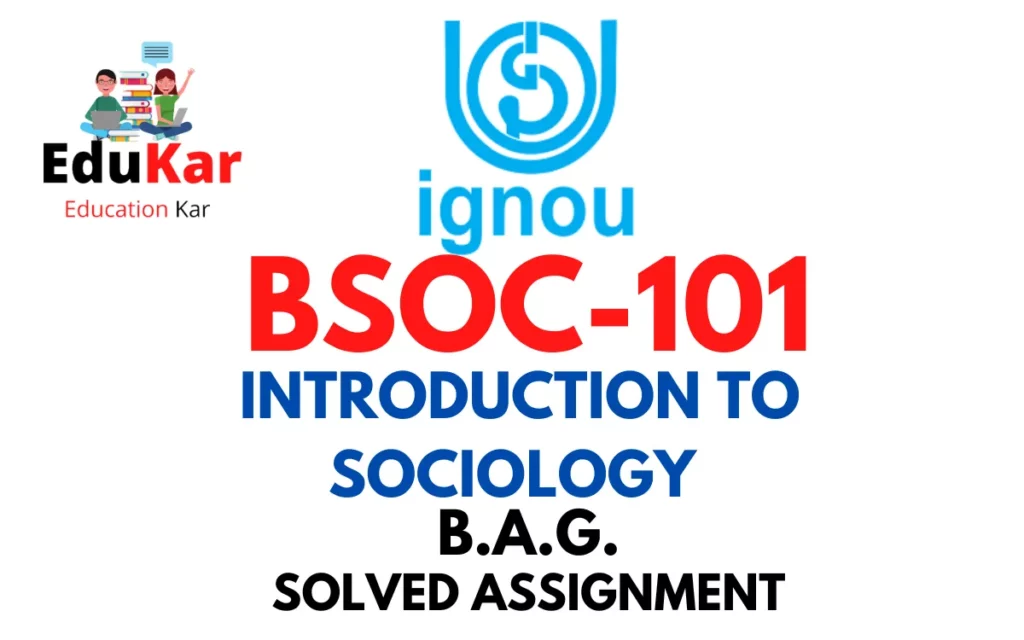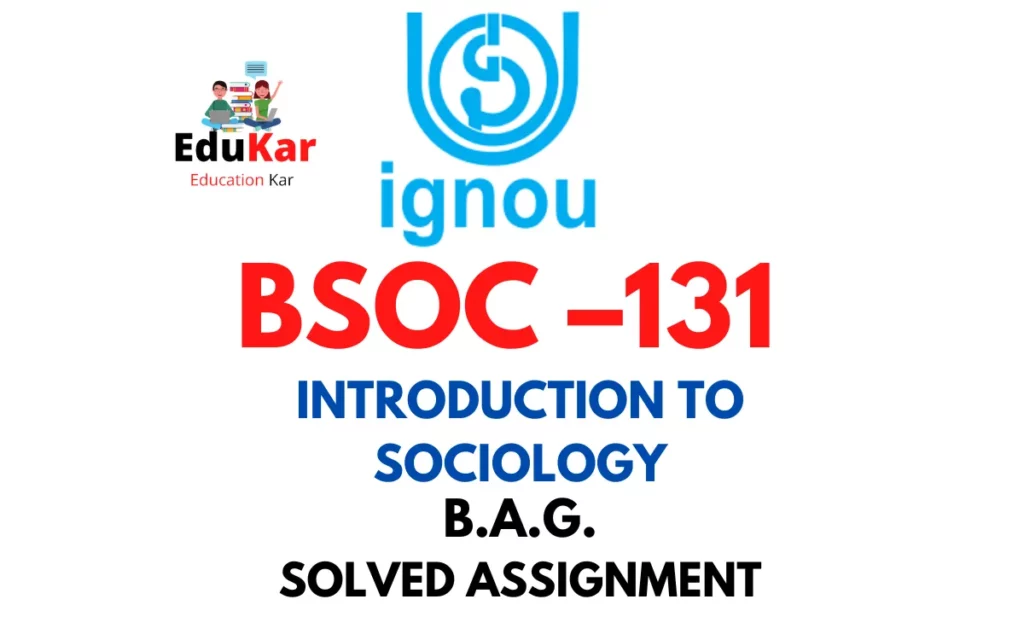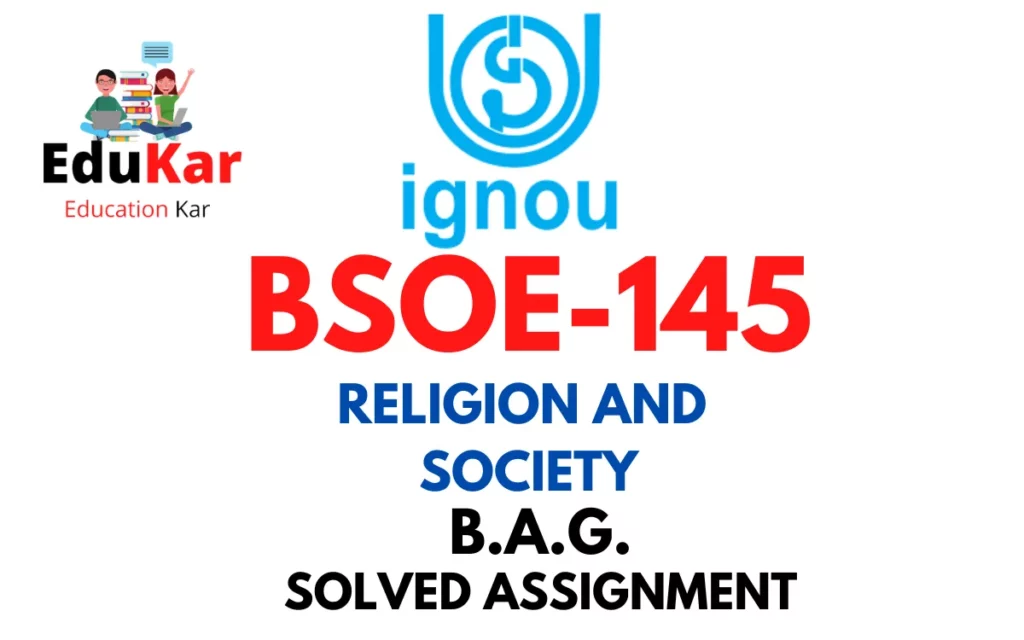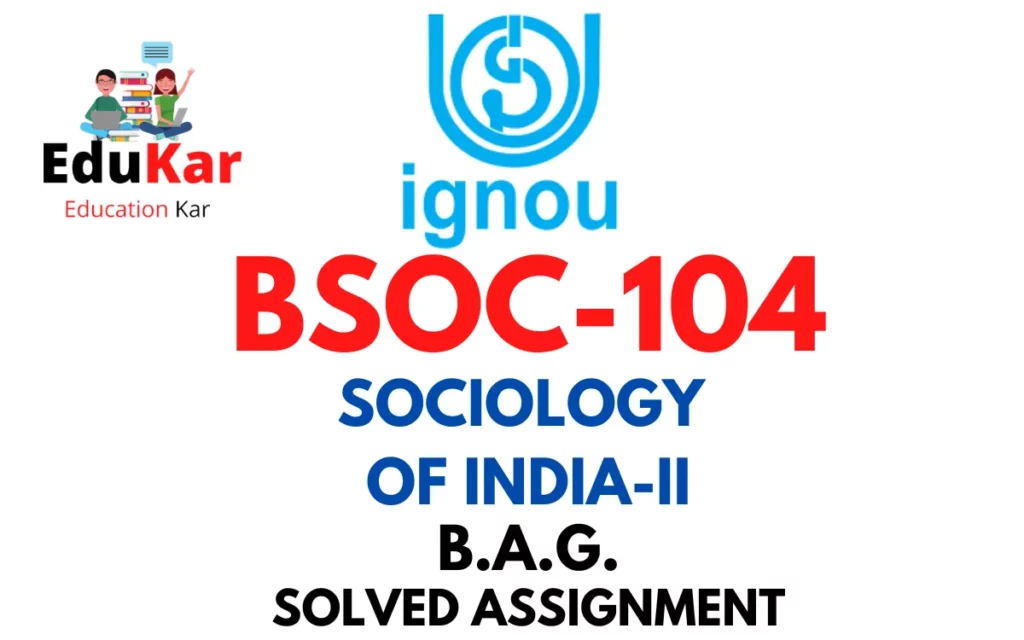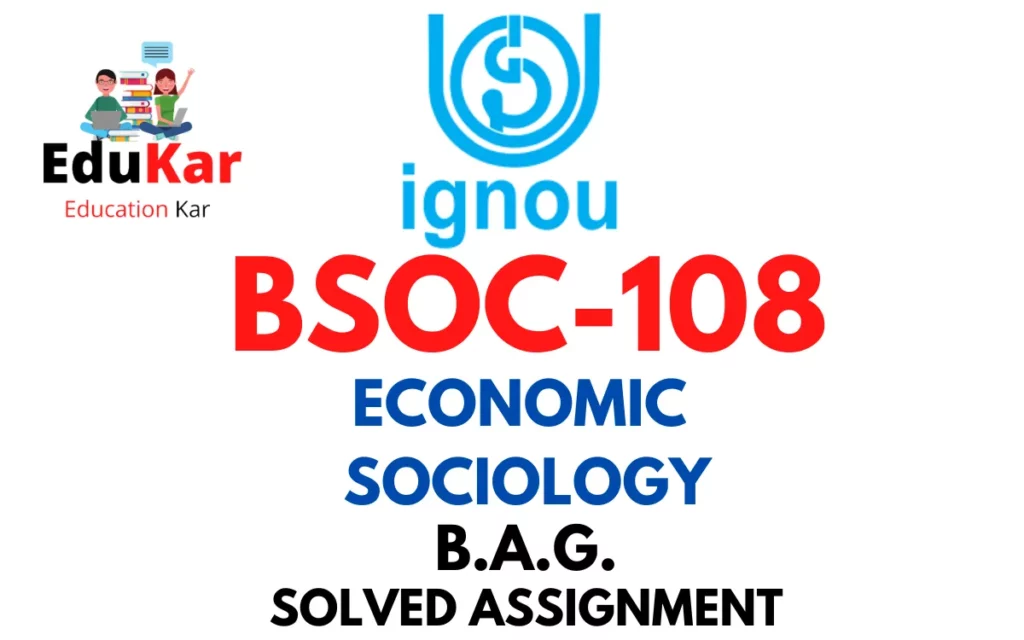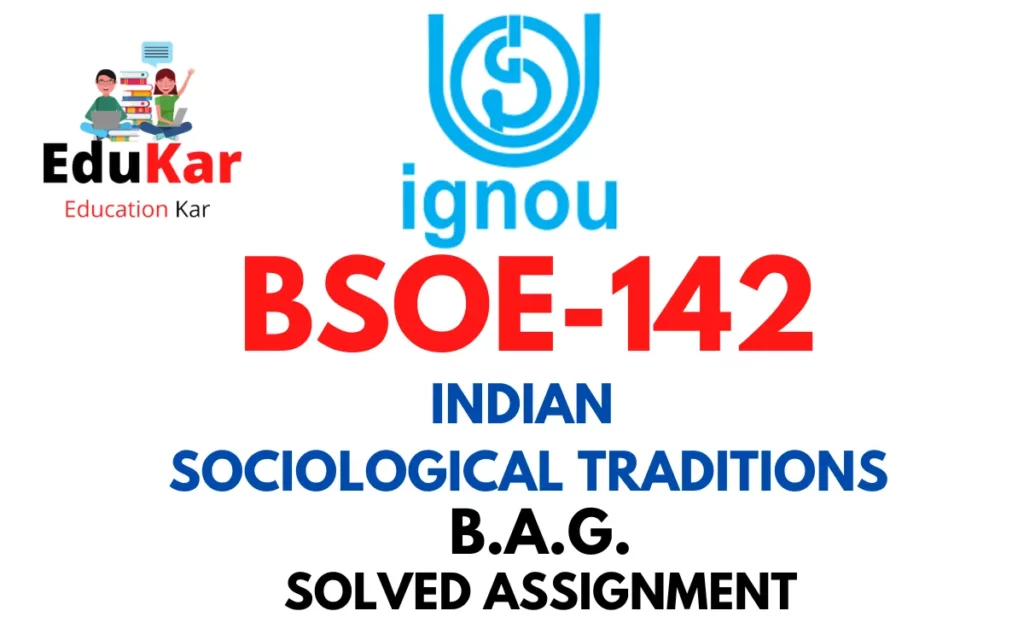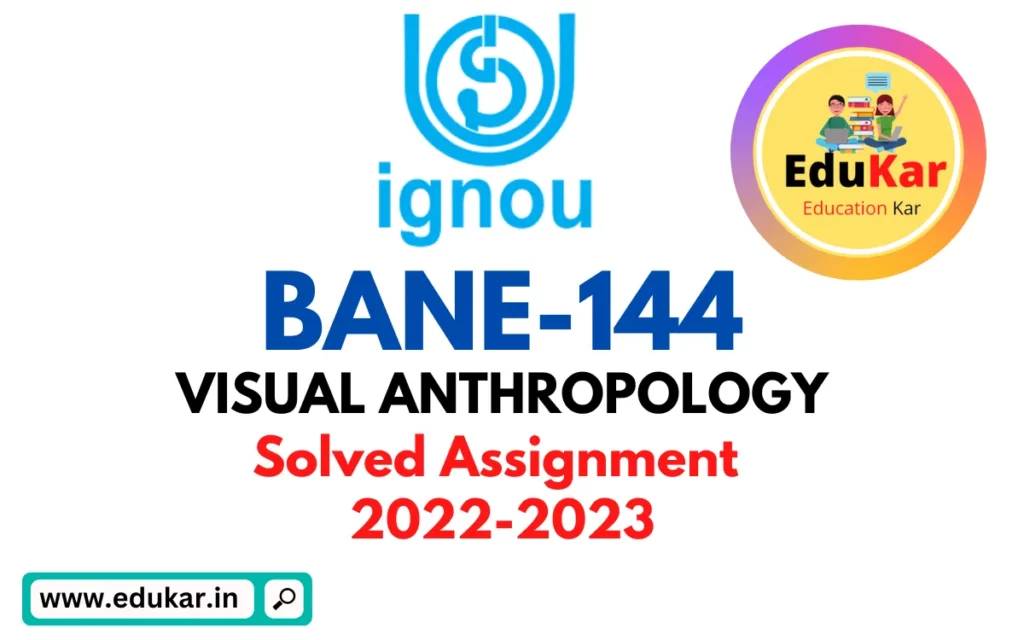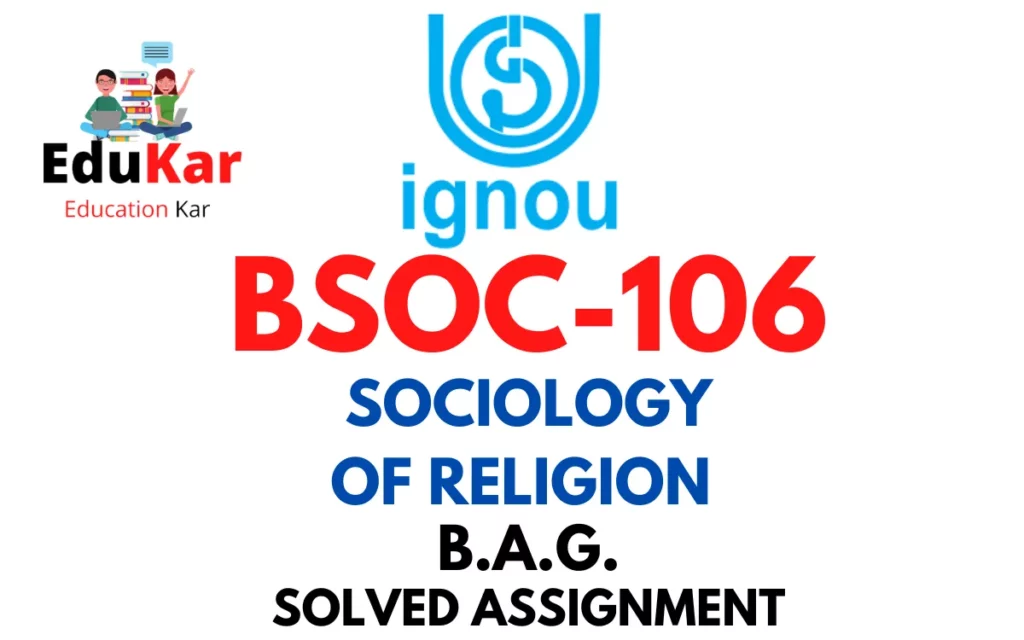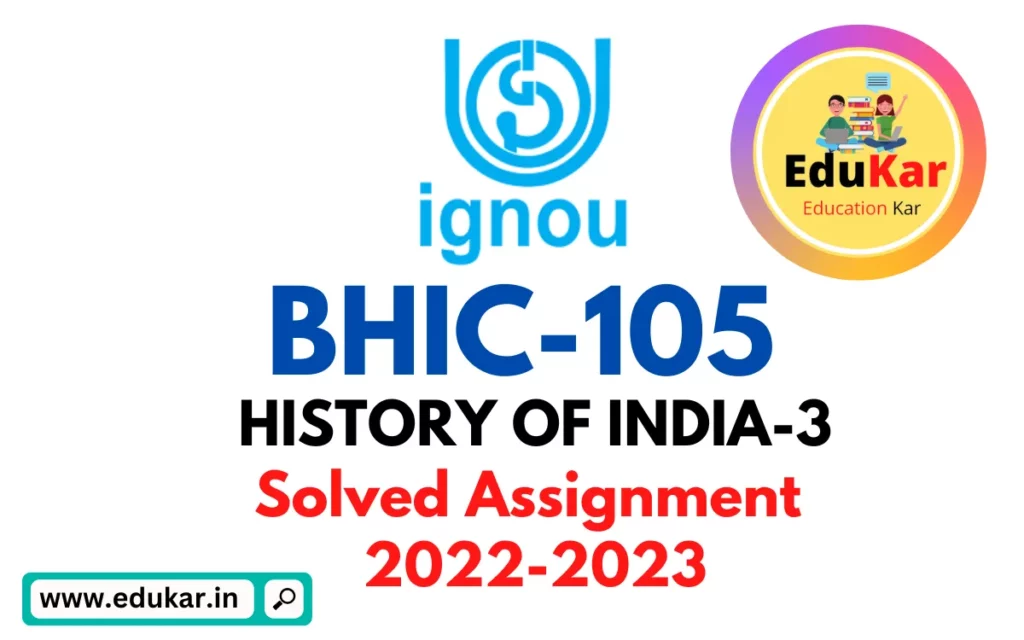Contents
- 1 Assignment – I
- 2 Answer the following in about 500 words each.
- 3 1. What is a historical tradition? Discuss socio-political and economic context of Indian historical traditions.
- 4 2. Briefly discuss main features of Marxist historiography with special reference to some important Marxist historians of India.
- 5 Assignment – II
- 6 Answer the following questions in about 250 words each.
- 7 3. Describe charita form of writing. In your opinion how can these textual compositions be treated as historical treatises?
- 8 4. Give a brief account of Sangam literature. Can it be justified to call Sangam literature, a history in the making?
- 9 5. Write a note on genealogical traditions of western India.
- 10 Assignment – III
- 11 Answer the following questions in about 100 words each.
- 12 6. Dana-stuti Hymns
- 13 7. Buranjis
- 14 8. Ashokan Edicts
- 15 9. Muhammad Qasim Firishta
- 16 10. Some important nationalist historians
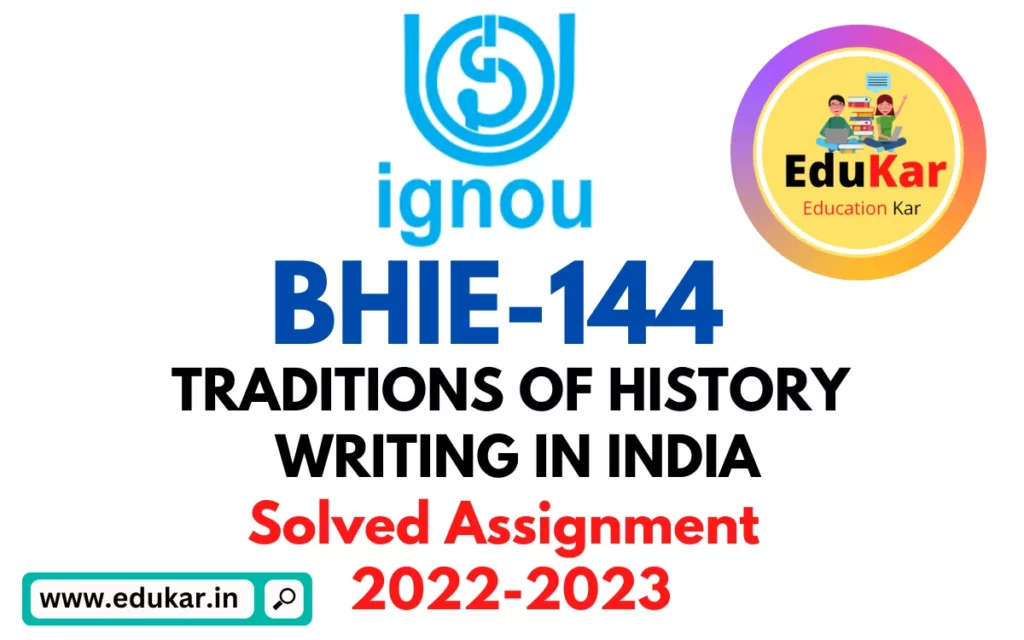
| Title | BHIE-144 |
| University | IGNOU |
| Degree | Bachelor Degree Programme |
| Course Code | BHIE-144 |
| Course Name | TRADITIONS OF HISTORY WRITING IN INDIA |
| Programme Name | Bachelor of Arts (General) |
| Programme Code | BAG |
| Total Marks | 100 |
| Year | 2022-2023 |
| Language | English |
| Assignment Code | BANS 183/ASST/TMA |
| Last Date for Submission of Assignment: | For June Examination: 31st April For December Examination: 30th September |
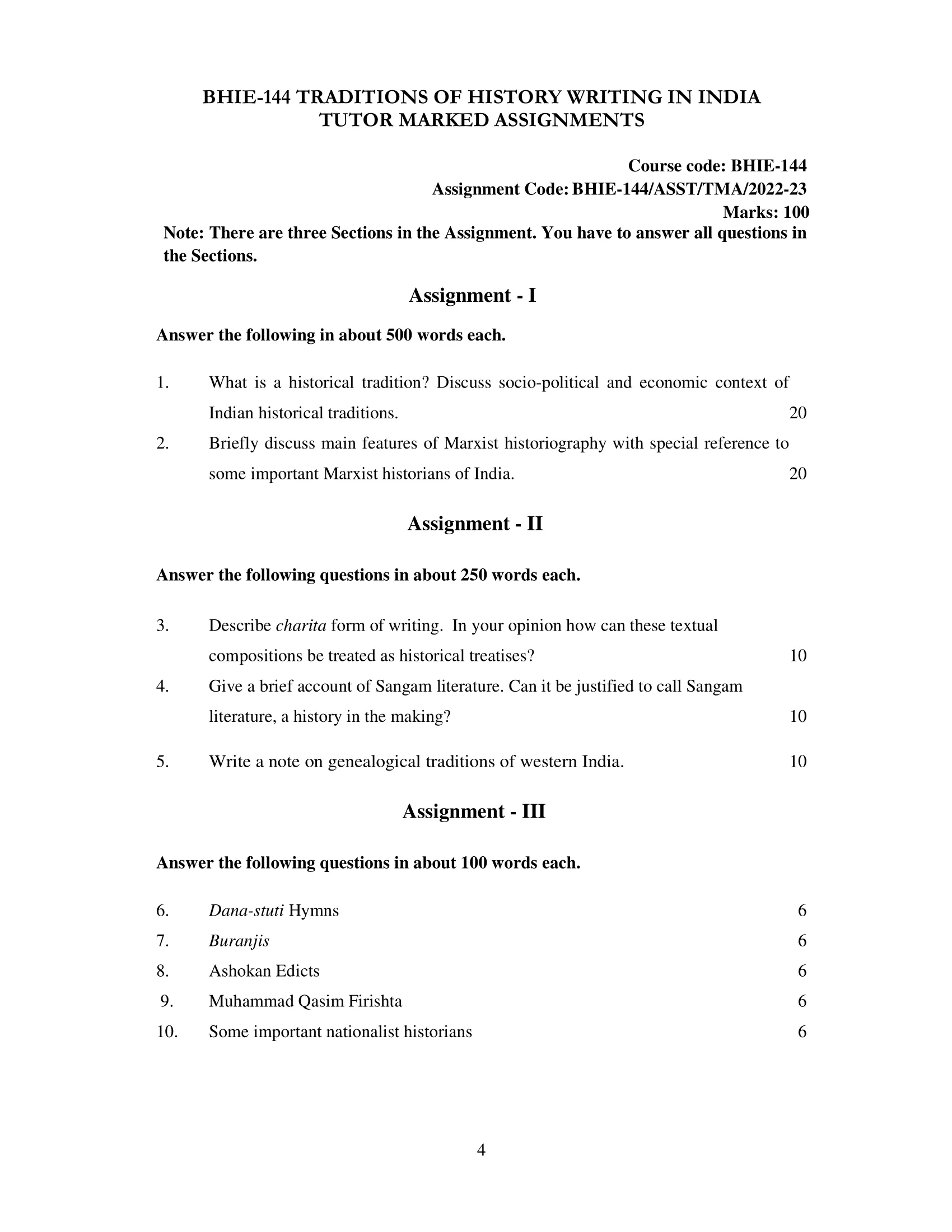
Assignment – I
Answer the following in about 500 words each.
1. What is a historical tradition? Discuss socio-political and economic context of Indian historical traditions.
Ans: Historical tradition refers to a cultural practice, belief or custom that has been passed down from generation to generation over a significant period of time. It refers to a pattern of beliefs, values, behaviors and norms that have been shaped by a community’s history, beliefs and experiences. Historical traditions provide a sense of continuity, stability and identity to a community, and are often seen as an integral part of a community’s heritage and cultural identity.
In the context of India, historical traditions have been shaped by a rich and diverse cultural heritage that has been shaped by multiple invasions, migrations and cultural exchange over thousands of years. The socio-political and economic context of India has had a profound impact on its historical traditions, with each dynasty and empire leaving its own unique cultural footprint.
For example, the Hindu traditions of India have been shaped by the religious and cultural beliefs of the Hindu kingdoms that ruled India over several centuries. These beliefs and practices have been passed down from generation to generation, forming the basis of Hindu cultural identity and tradition. The caste system, which is an integral part of Hinduism, was also shaped by the socio-economic context of India, reflecting the social and economic inequalities that existed in ancient India.
The Islamic traditions of India, on the other hand, have been shaped by the influence of the Muslim empires and dynasties that ruled India for several centuries. These traditions reflect the cultural and religious beliefs of the Muslim community in India, and are an integral part of their cultural identity.
The British colonial rule in India also had a profound impact on Indian historical traditions. The British introduced new cultural practices and norms, which influenced Indian society and shaped the country’s cultural heritage. The Indian independence movement, which led to the end of British rule in India, was a significant event in the history of India and shaped the country’s cultural and political traditions.
The socio-economic context of India has also had a significant impact on its historical traditions. For example, the caste system, which was shaped by the socio-economic context of India, has influenced Indian society and shaped its cultural traditions. The caste system reflects the social and economic inequalities that existed in ancient India, and has been a defining feature of Indian society for centuries.
2. Briefly discuss main features of Marxist historiography with special reference to some important Marxist historians of India.
Ans: Marxist historiography is a branch of historical writing that is based on the principles and theories of Marxism, a political and economic ideology developed by German philosopher Karl Marx. Marxist historiography emphasizes the role of class struggle and economic factors in shaping history and society, and aims to provide a critical analysis of the past in order to understand the present.
The main features of Marxist historiography include:
- Emphasis on class struggle: Marxist historiography places a strong emphasis on the role of class struggle in shaping history. It argues that the history of society is a history of conflict between different classes, with the ruling class using its power and control over the means of production to maintain its dominance over other classes.
- Economic determinism: Marxist historiography argues that economic factors play a determining role in shaping history and society. It views the mode of production (i.e. the way in which goods and services are produced and distributed) as the most important factor in shaping social, political and cultural developments.
- Critique of capitalism: Marxist historiography provides a critical analysis of capitalism and argues that the capitalist mode of production is inherently exploitative and leads to the exploitation and oppression of the working class.
- Materialist approach: Marxist historiography adopts a materialist approach to history, which emphasizes the role of material conditions (such as the means of production and the mode of distribution) in shaping social and cultural developments.
In India, Marxist historiography has been developed by a number of important Marxist historians, including:
- D.D. Kosambi: D.D. Kosambi was an Indian Marxist historian who made significant contributions to Indian historiography. He is known for his work on ancient Indian history and his materialist approach to history.
- R.S. Sharma: R.S. Sharma was an Indian Marxist historian who made significant contributions to Indian historiography. He is known for his work on ancient Indian history and his materialist approach to history.
- Romila Thapar: Romila Thapar is an Indian Marxist historian who has made significant contributions to Indian historiography. She is known for her work on ancient Indian history and her critical analysis of Indian society and culture.
These Marxist historians have had a significant impact on Indian historiography, and their work has helped to shape the way that Indian history is studied and understood. Marxist historiography has also been influential in shaping debates about Indian history and society, and has provided a critical perspective on the role of economic and class factors in shaping Indian society and culture.
Assignment – II
Answer the following questions in about 250 words each.
3. Describe charita form of writing. In your opinion how can these textual compositions be treated as historical treatises?
Ans: Charita, also known as “charitable biography,” is a genre of writing that focuses on the lives of exemplary individuals, especially religious and spiritual leaders. These texts aim to edify and inspire the reader, and often include stories of the subject’s virtues, miracles, and teachings. The purpose of charitas is to promote morality and provide examples of how to live a virtuous life.
One of the main features of charitas is the emphasis on hagiography, which is the study of saints and other holy individuals. These texts present their subjects as models of virtue, showing how they lived their lives according to religious teachings and beliefs. They also provide insight into the cultural, social, and religious context of the time in which they were written.
Charitas can be treated as historical treatises because they provide valuable information about the beliefs, values, and practices of a particular time and place. These texts often include details about the subject’s life and times, including historical events and figures. They also offer insights into the religious, cultural, and social norms of the period, making them a valuable resource for historical research.
4. Give a brief account of Sangam literature. Can it be justified to call Sangam literature, a history in the making?
Ans: Sangam literature is a body of ancient Tamil literary works produced in South India between the 3rd century BCE and the 3rd century CE. This literature is named after the “Sangams,” or literary academies, that were believed to have existed during this time. The Sangam literature consists of poems, hymns, and narratives, including epics such as the “Silappadikaram” and “Manimekalai.”
The Sangam literature is considered one of the most important sources of information about ancient Tamil culture, society, and politics. It provides valuable insights into the beliefs, values, and practices of the Tamil people during the period, including their religious and social structures, as well as their trade and commerce. The poems and hymns also give us a glimpse into the lives of the common people, including their daily routines, relationships, and struggles.
The Sangam literature can be considered a history in the making because it not only provides a glimpse into the past but also reflects the historical events and cultural changes taking place at the time. For example, the “Purananuru” poems provide valuable information about the political and social structure of ancient Tamil society, including the role of kings and warriors. The “Ahananuru” poems describe the courtship rituals and marital customs of the time, giving us a glimpse into the personal lives of the people.
5. Write a note on genealogical traditions of western India.
Ans: The genealogical traditions of Western India are a rich and complex part of the region’s cultural heritage. These traditions are centered around the preservation and transmission of family histories, lineages, and relationships. Genealogy was an important part of Hindu society in Western India and played a crucial role in determining an individual’s status and identity within the community.
In Western India, genealogy was traditionally passed down orally from one generation to the next, with family histories and lineages being recited at important life events such as weddings and births. This oral tradition was later recorded in written form in genealogy books called “vanshavali.” These books were maintained by family priests and were considered a valuable family treasure. They were used to establish claims to family property and to determine an individual’s status within the community.
Genealogy in Western India was also closely tied to the caste system, with a person’s caste and status being determined by their family history and lineage. Castes were often divided into sub-castes based on the profession or trade of the ancestors. Family histories were used to trace the origin of a person’s caste and to determine their place within the caste hierarchy.
In recent years, the genealogical traditions of Western India have come under threat as a result of modernization and globalization. The oral tradition of passing down family histories has declined, and many of the genealogy books have been lost or destroyed. However, there is a growing interest in preserving and documenting these traditions, and initiatives are underway to collect and preserve the remaining genealogy books.
Assignment – III
Answer the following questions in about 100 words each.
6. Dana-stuti Hymns
Ans: Dana-stuti Hymns are devotional hymns in Hinduism that are sung in praise of the gods and goddesses. These hymns are recited as part of various Hindu rituals and ceremonies, and are considered to be an important form of worship in Hinduism. Dana-stuti Hymns are typically recited with the intention of offering thanks and seeking blessings from the gods and goddesses. They are often sung in Sanskrit and are considered to be very powerful and sacred, as they are believed to bring blessings and good fortune to the devotees who sing them. The Dana-stuti Hymns have been an important part of Hindu tradition for many centuries and continue to play an important role in Hindu worship today.
7. Buranjis
Ans: Buranjis are historical chronicles written in Assamese language during the Ahom kingdom (1228-1826) in Assam, India. These chronicles were written by the royal scribes and were used to document the events and history of the Ahom kingdom. Buranjis are considered to be an important source of information about the history and culture of Assam, and provide valuable insights into the political, social and cultural developments of the region during the Ahom period. They were written in a narrative style and often contain accounts of battles, royal court proceedings, and important events such as the construction of temples and palaces. Today, Buranjis continue to be an important part of Assamese heritage and are considered to be a valuable source of information for scholars and researchers interested in the history of the region.
8. Ashokan Edicts
Ans: The Ashokan Edicts are a series of rock and pillar inscriptions created by the Mauryan Emperor Ashoka in the 3rd century BCE. These edicts are found throughout India and are considered to be some of the earliest examples of Indian writing. The edicts contain messages from Ashoka regarding his policies and beliefs, including his promotion of non-violence, religious tolerance, and the importance of moral behavior. The Ashokan Edicts provide valuable insights into the political, social, and religious conditions of ancient India and are considered to be an important part of India’s cultural heritage. They are written in a variety of languages including Prakrit, Greek, and Aramaic, and are considered to be an important source of information for scholars and researchers studying the history of ancient India. Today, the Ashokan Edicts are protected as national treasures and are considered to be an important part of India’s cultural heritage.
9. Muhammad Qasim Firishta
Ans: Muhammad Qasim Firishta was a Persian historian and writer of the 16th century who lived in the Mughal Empire. He is best known for his historical work “Tarikh-i Firishta,” which is a comprehensive history of the Deccan region of India, including the history of the Bahmani Sultanate and the Vijayanagara Empire.
Firishta was born in the city of Astarabad in present-day Iran and was trained in Islamic theology and Persian literature. He later travelled to India where he lived for several years, gaining extensive knowledge of the country’s history and culture.
Firishta’s “Tarikh-i Firishta” is considered one of the most important works of Persian historical writing and provides valuable insights into the political, social, and cultural history of India during the medieval period. The work is written in a narrative style and is noted for its accuracy and attention to detail.
10. Some important nationalist historians
Ans: Nationalist historians are those who use historical research and analysis to further the cause of nationalism and national identity. Some important nationalist historians include:
- J.C. van Leur – Indonesian nationalist historian who wrote extensively on the cultural and economic history of Southeast Asia.
- E. H. Carr – British historian who focused on the study of international relations and was a strong advocate for nationalism.
- Romila Thapar – Indian historian who has written extensively on the history of ancient India and has been a strong voice for Indian nationalism.
- Shin Chaeho – Korean nationalist historian who wrote about the history of Korea and was instrumental in the independence movement of the early 20th century.
These historians have made important contributions to the study of history and their works continue to shape the way we think about nationalism and national identity. Their focus on national identity and their commitment to advancing the cause of nationalism have made them important figures in the field of history.
How to Download BHIE-144 Solved Assignment?
You can download it from the www.edukar.in, they have a big database for all the IGNOU solved assignments.
Is the BHIE-144 Solved Assignment Free?
Yes this is absolutely free to download the solved assignment from www.edukar.in
What is the last submission date for BHIE-144 Assignment?
For June Examination: 31st April, For December Examination: 30th October

